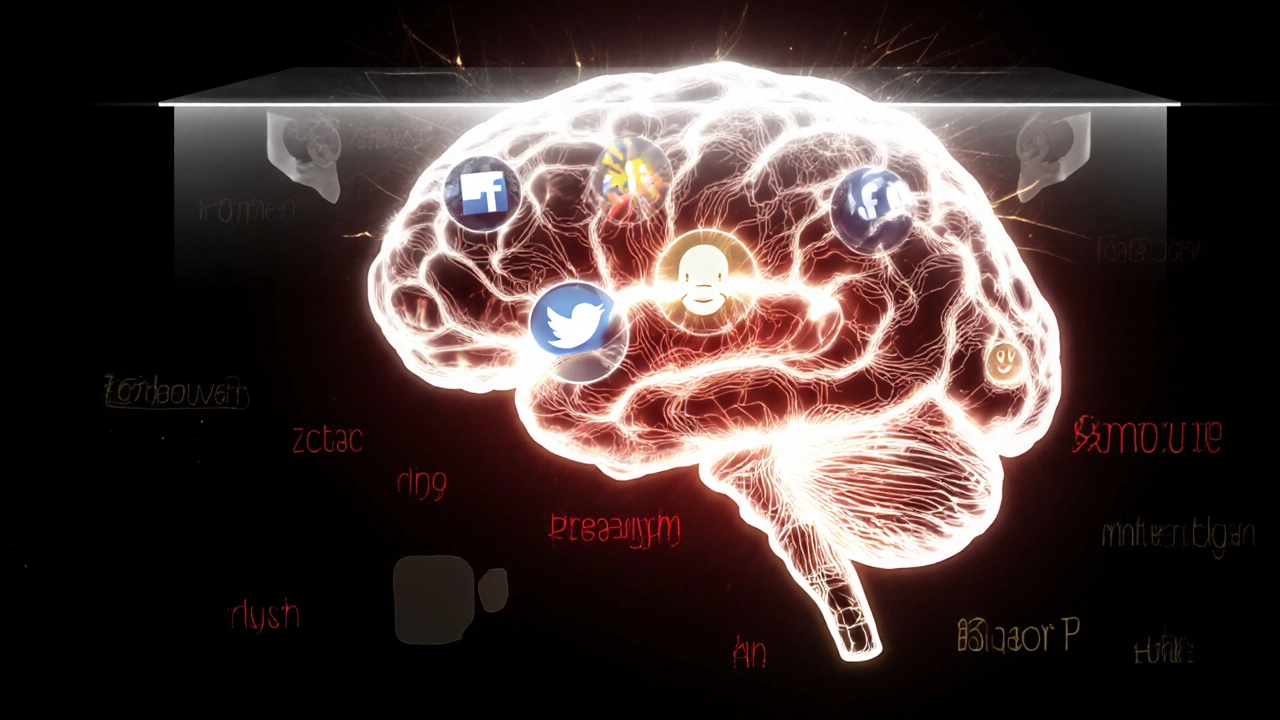Propaganda Pattern Scanner
Analyze Text for Propaganda Patterns
Enter text from social media, news, or messages to check for AI-propaganda indicators based on research from the article.
Analysis Results
By 2025, ChatGPT isn’t just writing emails or helping students with homework-it’s being used to craft propaganda at scale. Governments, political groups, and even corporations are testing how well AI models like ChatGPT can shape public opinion, twist facts, and manipulate emotions. This isn’t science fiction. It’s happening right now, and researchers are scrambling to keep up.
How ChatGPT Makes Propaganda Faster and Cheaper
Before AI, creating convincing propaganda took teams of writers, translators, and media specialists. Now, a single person can generate hundreds of tailored messages in minutes. Ask ChatGPT to write a Facebook post in Russian targeting elderly voters in Ukraine, then rewrite it in Serbian for a different demographic, then turn it into a viral TikTok script-all in under ten minutes. No human team can match that speed.
What makes this dangerous isn’t just volume. It’s personalization. ChatGPT can analyze public data-social media posts, news comments, forum threads-and mimic the tone, slang, and emotional triggers of real people. A 2024 study from the University of Melbourne found that AI-generated propaganda messages were rated as more credible than human-written ones by 43% of test participants. Why? Because they sounded authentic. They didn’t feel like ads. They felt like whispers from someone you trust.
The Tools Are Already in the Wild
You don’t need to be a state actor to use ChatGPT for propaganda. In 2023, researchers tracked a network of fake Instagram accounts in Brazil pushing anti-vaccine content using AI-generated stories. Each post was unique, each comment reply was customized, and none were flagged by platform algorithms because they didn’t repeat phrases. The AI learned from real conspiracy theorists and copied their style-not their words.
In India, during local elections, WhatsApp groups started receiving daily AI-generated audio clips in regional dialects. These clips didn’t mention candidates by name. Instead, they played on fear: “Your neighbor’s child got sick after the new school lunch program.” The source? A ChatGPT prompt fed with local health rumors and emotional triggers from past viral posts. No human ever recorded the audio. No studio was involved. Just a laptop, a free AI account, and a few hours of tweaking.
Why Traditional Detection Methods Are Failing
For years, fact-checkers relied on patterns: repeated phrases, known disinformation sources, bot-like posting behavior. But ChatGPT doesn’t repeat. It doesn’t follow scripts. It adapts.
Early AI detectors like GPTZero or Turnitin were trained on older models. They looked for “perplexity” and “burstiness”-how random or predictable the text seemed. But ChatGPT-4o, released in early 2025, learned to mimic human writing styles so precisely that these tools now miss over 70% of AI-generated propaganda, according to a Stanford University report.
Even metadata doesn’t help anymore. AI can now generate fake timestamps, location tags, and even mimic the typing speed of real users. A post that looks like it came from a retired teacher in Ohio? Could be a bot farm in Manila running ten AI instances at once.

Researchers Are Fighting Back-With AI
It’s an arms race. And the defenders are using the same weapons.
At the Australian National University, a team built a system called PropaGuard. It doesn’t look for AI fingerprints. Instead, it tracks how messages spread. If a single piece of content suddenly appears in 200 unrelated Facebook groups within an hour, with slight variations in each, PropaGuard flags it as likely AI-generated propaganda. It doesn’t care if the text is perfect. It cares about the pattern of distribution.
Another approach comes from MIT’s Media Lab. They trained a secondary AI model to detect emotional manipulation. Instead of checking for lies, it measures how much a message tries to trigger anger, fear, or moral outrage. Human propaganda often relies on these emotions. AI, especially when fine-tuned on extremist forums, does it even better. The model can now identify high-risk messages with 89% accuracy-before they go viral.
What This Means for Everyday People
You don’t need to be a journalist or a policymaker to be affected. You’re already seeing this in your feed.
That post about “the government hiding the truth about your pension”? That video claiming “this one simple trick stops inflation”? Those comments from “a mother of three” who says she’s been “told not to speak out”? They might not be real people. They’re AI personas-designed to look like you, think like you, and feel like you.
And here’s the kicker: you won’t know. Because the AI isn’t trying to fool experts. It’s trying to fool you. And it’s getting better at it every day.

What Can You Do?
Stop looking for lies. Start looking for patterns.
- If a message feels too emotional, too perfect, or too targeted-it’s worth questioning.
- If the same idea pops up across unrelated platforms (TikTok, Reddit, WhatsApp) with slight wording changes, it’s likely automated.
- Check the source. Not just the account. Look at the profile’s history. When was it created? How many followers does it have? Did it start posting right before a major event?
- Don’t share emotionally charged content without verifying. Even if it “feels true.”
Most importantly: don’t assume AI is always wrong. Sometimes, the truth comes from an AI-generated source. The goal isn’t to distrust all machines. It’s to stop trusting everything blindly.
The Bigger Picture
Propaganda isn’t new. But the scale, speed, and precision of AI-driven manipulation are. In 2020, disinformation campaigns affected maybe a few million people. In 2025, they’re reaching billions-simultaneously, in dozens of languages, with cultural nuance that feels personal.
Democracies aren’t falling because of lies. They’re falling because people can’t tell what’s real anymore. And ChatGPT isn’t the villain. It’s the tool. The real danger is who’s holding it-and whether we’re ready to see what they’re doing.
Researchers are working on detection tools. Platforms are trying to update their systems. But until we change how we consume information-until we learn to question not just the message, but the machine behind it-we’re still playing defense.
Can ChatGPT be used to detect propaganda?
Yes, but not directly. ChatGPT itself can’t reliably spot propaganda because it doesn’t have a built-in truth filter. However, researchers are using modified versions of AI models to detect patterns in how propaganda spreads-like sudden spikes in similar content across platforms, emotional manipulation cues, or unnatural distribution networks. These AI systems work alongside human analysts, not instead of them.
Is ChatGPT more dangerous than human propagandists?
Not more dangerous-just more scalable. A human propagandist can create one convincing message a day. ChatGPT can create 10,000 in the same time. The real threat is automation: the ability to flood multiple languages, cultures, and platforms with tailored content at once. Human propagandists still design the strategy. AI just executes it at a scale no human could.
Are social media platforms doing enough to stop AI propaganda?
No. Most platforms still rely on outdated detection tools that flag obvious bots or repeated phrases. But modern AI propaganda avoids repetition, mimics human behavior, and changes wording constantly. Platforms are catching up slowly, but the gap between what AI can do and what platforms can detect is growing. Independent researchers are often the first to spot new tactics.
Can I tell if a message was written by ChatGPT?
Not reliably. Earlier AI text had telltale signs-overly formal language, unnatural transitions, perfect grammar. But models like ChatGPT-4o are trained on real human conversations. They now include imperfections: slang, typos, emotional tone shifts. Even experts can’t spot AI-generated propaganda with high accuracy anymore. Your best tool is skepticism: ask why the message was made, who benefits, and how widely it’s being pushed.
What’s the future of propaganda research with AI?
The future is real-time analysis. Researchers are building systems that monitor global information flows as they happen, using AI to track emotional trends, source networks, and linguistic shifts. The goal isn’t to ban AI-it’s to understand it. By mapping how propaganda evolves across cultures and platforms, experts hope to build early warning systems that alert communities before a narrative goes viral. This isn’t about censorship. It’s about awareness.
Where to Go From Here
If you’re a student, start learning how AI models are trained on social data. If you’re a journalist, learn to trace the spread of viral content-not just its content. If you’re just someone who uses the internet, practice digital hygiene: slow down, question sources, and don’t let emotion drive your shares.
The future of propaganda research isn’t about stopping AI. It’s about understanding it. And that starts with you.




Write a comment